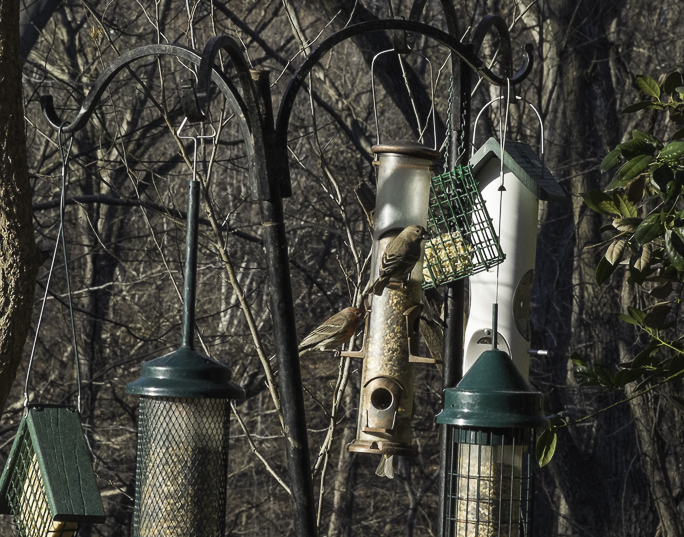 Migration is Risky Business
Migration is Risky Business
Migration can be a very dangerous undertaking. The journey sends birds across great distances and into unfamiliar territories. They must overcome many obstacles including:
- lack of food
- increased exposure to predators
- physical exhaustion
- bad weather
These things are largely out of the birds’ control. Much is left to chance.
Increasingly, Long Distant Migrants Are Facing A New Set of Threats
Much of their habitat has been destroyed by deforestation, pollution, and urban development. In what breeding area remains, competition for food, water and nesting area can be fierce.
In cities, birds must contend with an entirely new set of threats and dangers that are completely unfamiliar to them, namely outdoor cats (who kill between 1.4 – 3.7 billion birds annually in the United States alone), and glass and artificial lighting .
The problem with glass:
- Reflective glass has a mirror effect. Depending on the location of the glass, birds might see more trees and greenery or clear skies in front of them.
- Transparent glass has a see-through effect. From the birds perspective, it seems as if there are no obstacles ahead.
- At night, birds must contend with artificial lighting. We do not know with complete certainty why birds are attracted to light but there are a few theories. It might be that they confuse the illumination from windows and communication towers with stars. It is also possible that the light has some hypnotic effect on them. Whatever the cause, the result is the same: birds collide with the glass and are often fatally injured.
The exact numbers for bird deaths resulting for building collisions is difficult to know but the rough estimate is that somewhere between 365 to 988 million birds are killed (annually) in the United States from building collisions alone.
Some birds–such as songbirds–are more prone to building collisions. Others, like pigeons, starlings, and commons sparrows are particularly good at avoiding them.
Help Us Turn Off the Lights!
In an effort to help reduce bird death, City Wildlife started Lights Out DC, which was modeled after highly successful lights-out programs in Chicago, Toronto, Boston, New York City, and Baltimore, to name a few.
During migratory seasons, Lights Out DC volunteers walk a four-mile route in downtown Washington to inspect buildings and collect dead or injured migratory birds that have collided with glass. Dead birds are tagged and saved. Injured birds are monitored and released (if recovered) or taken to City Wildlife’s rehabilitation center if their injuries are more severe.
The data we collect is used to convince building owners and managers to adopt light abatement procedures and to raise awareness about migratory birds and the threats they face.
Interested in volunteering for Lights Out DC? Click here to fill out a volunteer application.
How Can You Help Migrating Birds at Home?
There are many ways to help migrating birds. By the time they reach your backyard, they have probably traveled many miles. Help them replenish their strength by putting out fresh food and water. Turn off your lights at night and put up infrared warning stickers or bird tape if you have a lot of glass.
Cool Tip: Don’t want to buy infrared stickers or bird tape? Try putting up window screens which have the added benefit of keeping insects out when you open your windows in the spring and summer.
Here are a few tips from Ornithologist and City Wildlife board member Jim Tate on how you can help keep birds safe this migratory season:
- Learn the names and needs of the common birds of your neighborhood, teach your neighbors, and get involved with your local birding community. Start with eBird.org.
- Put up a species specific and properly built bird house on your property. Manage the house and adjacent habitat so the native birds have food, water and habitat. Start with the National Wildlife Federation Garden page.
- Put up seed feeders and nectar feeders on your property–either very close or several feet away from your windows. Start with Audubon at Home.
- Put infrared stickers or screens on windows and doors that cause window strikes. Start with this article from Bird Watching Daily.
- Limit the use of lawn chemicals and pesticides in your garden. They are harmful not only to birds, but also to you, and your pets. Start with this article from Hometalk.
- At night, turn off the lights or close the blinds of your high-rise offices or apartment buildings. Spread the word to your co-workers. Thousands of migratory songbirds, which are attracted by lights, are killed each year by colliding with lighted buildings at night.
Interested in learning more about birds? The Audubon Society of the District of Columbia offers free birding trips. Don’t have binoculars? Let them know and they will do their best to come up with a set for you. The Audubon Naturalist Society offers classes for adults and children. They also have a summer camps and school programs. If you have never been, you should visit their 40-acre Woodend Nature Sanctuary in Montgomery County.



Hi! I could have sworn I’ve been to this blog before
but after browsing through some of the post I realized it’s new to me.
Anyhow, I’m definitely glad I found it and I’ll be bookmarking and checking back often!
Hi Huey– We are so glad you are enjoying the posts and will try and keep a good flow of interesting information and stories coming your way! Thanks so much for your feedback!
Wow! Wow! Wow! This is SO cool! I just love seeing ctrtiers I wouldn’t normally get to see. My Husband wants to travel to see the world – I want to travel to see the ctrtiers hehehe. I guess I’m obsessed.This is an awesome photo! I love it and I’m SO glad you shared this!